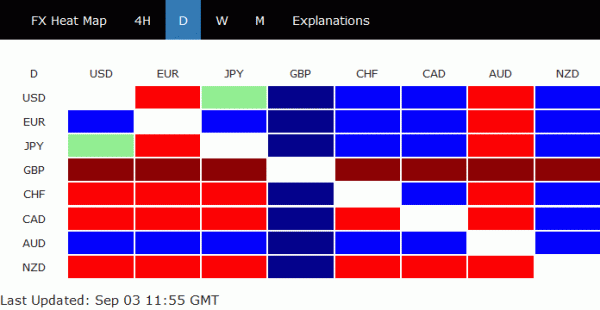Entering into US session, Sterling remains the weakest one for today. Selloff started as EU chief negotiator slammed UK’s Brexit plan. Further pressure is added to the Pound as PMI manufacturing dropped to 25 month low in August. The BBC reported that UK finance ministry is trying to persuade BoE Governor Mark Carney to stay longer. But Prime Minister May’s spokesman said Carney still plans to leave when his term expires next year. Canadian Dollar and New Zealand dollar takes turn to be the second weakest. Canada will resume trade talk with the US this Wednesday. But there is no hope on concluding a deal.
On the other hand, Australian Dollar and Euro are the strongest ones for today so far. That’s partly due to selloff in Sterling. But more importantly, these two currencies are just digesting last week’s steep selloff. Turkish central bank CBRT said it will adjust its monetary stance in September meeting given the “significant risks” to price stability. Some volatility is seen in USD/TRY but there is hardly any direction as sideway trading continues. A risk on Lira, and Euro, is that CBRT is now setting itself up to disappoint the markets.
In other markets, European stocks are mixed at the time of writing. FTSE continues it’s inverse relationship with the Pound and is up 0.93%. CAC opened lower and turned positive to up 0.18%. DAX, on the other hand, stays in red, down -0.13%. Italy concerns seemed to have eased a bit as 10 year Italian bond yield drops -0.41 to 3.193. German 10 year bund yield is up slightly by 0.005 at 0.335. Earlier today, all major Asian indices declined. Nikkei closed down -0.69%, Hong Kong HSI down -0.63%, China Shanghai SSE down -0.17%. Singapore Strait Times down -0.20%. WTI crude oil is back above 70 but it’s uncertain which this level can be kept. Gold continues to hover around 1200.













